113
This post marks 113 straight days with a new educational blog post. What’s wrong with me??? With so many folks getting in the habit of using our B&H and Amazon links why quit now? To show your appreciation for my efforts here, we do ask that you use our B&H and Amazon affiliate links for all of your B&H and Amazon purchases. Please check the availability of all photographic accessories in the BIRDS AS ART Online Store. We sell only what I use and depend on. We will not sell you junk. We know what you need to make creating great images easy and fun. And we are always glad to answer your gear questions via e-mail.
You can find the following items in the store: Gitzo tripods, Mongoose M3.6 and Wimberley heads, plates, low feet, and accessories, flash brackets, , Delkin e-film Pro Compact Flash Cards, LensCoat products, and our unique line-up of educational materials including ABP I & II, Digital Basics, Site and Set-up e-Guides, Canon and Nikon Camera Users and AF e-Guides, and MP-4 Photoshop video tutorials among others.
We would of course appreciate you using our B&H and Amazon affiliate links for all of your B&H and Amazon major gear, video, electronic, household, and personal purchases. For the photographic stuff mentioned in the paragraph above we would of course greatly appreciate your business. Here is a huge thank you to the many who have been using our links on a regular basis and visiting the BAA Online store as well.
I had a great morning with Jim Neiger and the Ospreys, came home, took a nap, took a swim, had an ice bath, and cooked dinner. I prepared this blog post in about 1 1/2 hours on Friday and plan to publish it early on Saturday before I head to Gatorland with single client and new friend Jim Weerts. I need to get to bed early.
ps: At 4:23am Saturday morning I learned that old friend and multiple IPT veteran Peter Hawrylyshyn will be joining us at Gatorland for the day. Talk about the last minute…
Is It Too Cute? Is It Phony? Or Both?
If you missed this blog post, “Is It Too Cute? Is It Phony? Or Both?,” you might want to check it out first here so that everything below will make sense.
|
From last July’s Nickerson Beach Baby Beach Nesting Birds IPT with the Gitzo 3532 LS carbon fiber tripod, the Mongoose M3.6 head, the Canon EF 200-400mm f/4L IS USM Lens with Internal 1.4x Extender, an external Canon Extender EF 1.4X III (at the maximum 784mm) and the Canon EOS-1D X. ISO 800. Evaluative metering +1 2/3 stops as framed: 1/200 sec. at f/11 in Manual mode. AWB. Central Sensor (by necessity)/AI Servo-Surround/Rear Focus AF on the near-leg of the upside-down chick and re-compose. Click here to see the latest version of the Rear Focus Tutorial. Click on the image to see a larger version.
|
Late to the Party
It was 12 minutes after 7pm on July 24, 2013 on last summer’s Nickerson Beach Baby Beach-nesting Birds IPT. I had taken a walk with a few of the participant down to the ocean to look for oystercatcher chicks getting fed. When we walked back up to the rest of the group everyone was excitedly photographing our favorite nest while sitting behind their longest lens. The nest, with two small chicks, was located just outside the colony ropes. When one of the adults was incubating, we kept our distance. But with the cloudy weather both adults were often away from the nest at the same time. It was then that we approached slowly and photographed the two little ones.
As I got closer we wondered what all the excitement was about. Everyone was giggling at the sight of the upside down chick with its legs in the air. I only had a chance to make about a half dozen images when the upside-down chick righted itself. One of the adults landed by the nest so we all backed up slowly on our butts or knees. I kept only two images, the one above and the one below.
The Image Above
For the image above, I focused on the chicks legs. The chick on our right is simply not sharp as there was nowhere near enough depth-of-field even at f/11. Note that wide open was f/8 so I was only stopped down one stop. I love the up-in-the-air pink feet but I did not like the the eye of the upside-down bird was hidden behind the small piece of wood and I did not at all like that the chick on our right was soft.
|
This image, another frame from the same series, was also (and obviously) created with the same gear, the Gitzo 3532 LS carbon fiber tripod, the Mongoose M3.6 head, the Canon EF 200-400mm f/4L IS USM Lens with Internal 1.4x Extender, an external Canon Extender EF 1.4X III (at the maximum 784mm) and the Canon EOS-1D X. ISO 800. Evaluative metering +1 2/3 stops as framed: 1/200 sec. at f/11 in Manual mode. AWB. Central Sensor (by necessity)/AI Servo-Surround/Rear Focus AF on the eye of the right hand bird and re-compose. Click here to see the latest version of the Rear Focus Tutorial. Click on the image to see a larger version.
|
The Second Image
With only one leg in the air, and the left-hand chick’s head turned completely away, the only thing that the second image had going for it was that the bird on the right was sharp….
Coming Clean
First, I decided to paint a Quick Mask of the sharp chick from the second image, put the selection on a layer, and cover the soft chick in the first image. That went fairly well though I carelessly left a small halo above the head. That done, I still did not like the way the head of the chick with the flailing legs was obscured. Then, after noticing that the bill of the chick now on the right was juxtaposed and angled roughly the same as that of the chick on the left, I came up with a plan. I painted a Quick Mask of the right hand head, put it on a layer, and used the Move Tool and the Transform Tool to put it in place. I was able to fine-tune things using Layer Masks, several smaller Quick Masks, the Patch Tool, and the Spot-healing Brush. As suggested by Denise Ippolito who saw and early version of the optimized image, I cleaned the sand off the head on the left and even moved the central brown marking to the right in hopes that no one would notice that the two heads were in fact the same…. None-the-less, two folks, BK UK and Wayne Rundell, both figured out what I had done by paying close attention to detail. Way to go guys!
What’s Different?
Taking the first image as the “original” what other changes did I make? There are many. Try to note as many as you can and leave a comment.
UK Puffins & Gannet IPT
Details for this great trip have been finalized. Please e-mail me for complete info if you are interested. Needed: one female roommate.
|
From last July’s Nickerson Beach Baby Beach Nesting Birds IPT with the Gitzo 3532 LS carbon fiber tripod, the Mongoose M3.6 head, the Canon EF 200-400mm f/4L IS USM Lens with Internal 1.4x Extender, an external Canon Extender EF 1.4X III (at the maximum 784mm) and the Canon EOS-1D X. ISO 800. Evaluative metering +1 2/3 stops as framed: 1/200 sec. at f/11 in Manual mode. AWB. Central Sensor (by necessity)/AI Servo-Surround/Rear Focus AF on the eye of the right hand bird and re-compose. Click here to see the latest version of the Rear Focus Tutorial. Click on the image to see a larger version.
|
The Optimized Image
The optimized TIF file is of course labeled as a composite. It was fun to be there when it happened, fun to realize the possibilities, and fun to create. You can see the original post and all the comments here.
Digital Basics
Are you tired of making your images look worse in Photoshop? Do you have no clue as to how I optimized the images above? Everything above plus tons more is detailed in my Digital Basics File, an instructional PDF that is sent via e-mail. It includes my complete digital workflow, dozens of great Photoshop tips, the use of Contrast Masks, several different ways of expanding canvas, all of my time-saving Keyboard Shortcuts, Quick Masking, Layer Masking, and NIK Color Efex Pro basics, my killer image clean-up techniques, Digital Eye Doctor, creating time-saving actions, and lots more.
APTATS I & II
Learn the details of advanced Quick Masking techniques in APTATS I. Mention this blog post and apply a $5 discount with phone orders only. Learn advanced Layer Masking Techniques in APTATS II. Mention this blog post and apply a $5 discount with phone orders only. Buy the pair, APTATS I and APTATS II and we will be glad to apply at $15 discount with phone orders only.
The DPP RAW Conversion Guide
After seeing the accurate colors that I get from my DPP RAW conversions, Japan in Winter co-leader Paul McKenzie switched to DPP conversions and Denise Ippolito is considering doing the same. Now that is amazing…. To learn why I use Canon’s Digital Photo Professional (DPP) to convert every image that I work on, click here.
|
Nickerson Beach 2013 IPT images and card design copyright 2013: Arthur Morris/BIRDS AS ART. From upper left to right clockwise: skimmer blur, Sanderling flock with ocean and Long Beach, LI, NY in the background, backlit skimmer landing, Common Tern chick eating baby Bluefish, displaying American Oystercatcher, Common Tern brooding chick, young oystercatcher eating sand crab, newborn tern chick, adult Common Tern in flight. Click on the image to enjoy a larger version. |
Nickerson Baby Beach-nesting Birds IPT: 3-Full Days/July 15-17, 2014: $1199. Introductory meet and greet: 8pm, Monday, July 14, 2014. Co-leaders Arthur Morris and Denise Ippolito
Join us on Long Island, NY next summer to photograph Black Skimmers, Common Terns with chicks, American Oystercatcher families, and possibly some just-hatched Black Skimmer chicks. The opportunities will include chances to photograph a variety of breeding behaviors including courtship feeding, display flight and combat, and copulations. Car-pooling is recommended; if we opt to return to the beach before 5pm there is a $30/vehicle parking fee that is not included so it is best to share that expense. Parking in the morning is free.
A $499 non-refundable deposit is required to hold your slot for this IPT. Your balance is due 2 months before the date of the IPT and is also non-refundable. If the trip fills, we will be glad to apply a credit applicable to a future IPT for the full amount less a $100 processing fee. If we do not receive your check for the balance on or before the due date we will try to fill your spot from the waiting list. If your spot is filled, you will lose your deposit. If not, you can secure your spot by paying your balance.
Please print, complete, and sign the form that is linked to here and shoot it to us along with your deposit check (made out to “Arthur Morris.”) Though we prefer a check, you can also leave your deposit with a credit card by calling the office at 863-692-0906. If you register by phone, please print, complete and sign the form as noted above and either mail it to us or e-mail the scan.
If you have any questions, please feel free to contact me via e-mail
|
Nickerson Beach Summer 2013 images and card design copyright 2013: Denise Ippolito/A Creative Adventure. From upper left to right clockwise: Black Skimmers battling, Piping Plover goose-stepping, Common Terns copulating, Black Skimmer chick, skimmer aerial battle, adult oystercatcher sleeping on beach, juvenile oystercatcher striding, juvenile oystercatcher with prey item, backlit skimmer chick being fed at dawn. Click on the image to enjoy a larger version. |
Denise’s Card
As I mentioned above, the skimmers were both low in numbers and late nesting last July. Typically there would be lots of nests and more than a few small chicks on those dates. All of Neesie’s images above were made within 2 weeks of the IPT and the skimmer chicks in particular give a much more typical picture of activity in mid-July.
Support the BAA Blog. Support the BAA Bulletins: Shop B&H here!
We want and need to keep providing you with the latest free information, photography and Photoshop lessons, and all manner of related information. Show your appreciation by making your purchases immediately after clicking on any of our B&H or Amazon Affiliate links in this blog post. Remember, B&H ain’t just photography!




Amazon
Everyone buys something from Amazon, be it a big lens or deodorant. Support the blog by starting your search by clicking on the logo-link below. No purchase is too small to be appreciated; they all add up. Why make it a habit? Because I make it a habit of bringing you new images and information on an almost daily basis.
Some folks with browser problems are not seeing the Amazon logo links. They can use the affiliate link here to support the blog.
Typos
In all blog posts and Bulletins, feel free to e-mail or to leave a comment regarding any typos, wrong words, misspellings, omissions, or grammatical errors. Just be right. 🙂

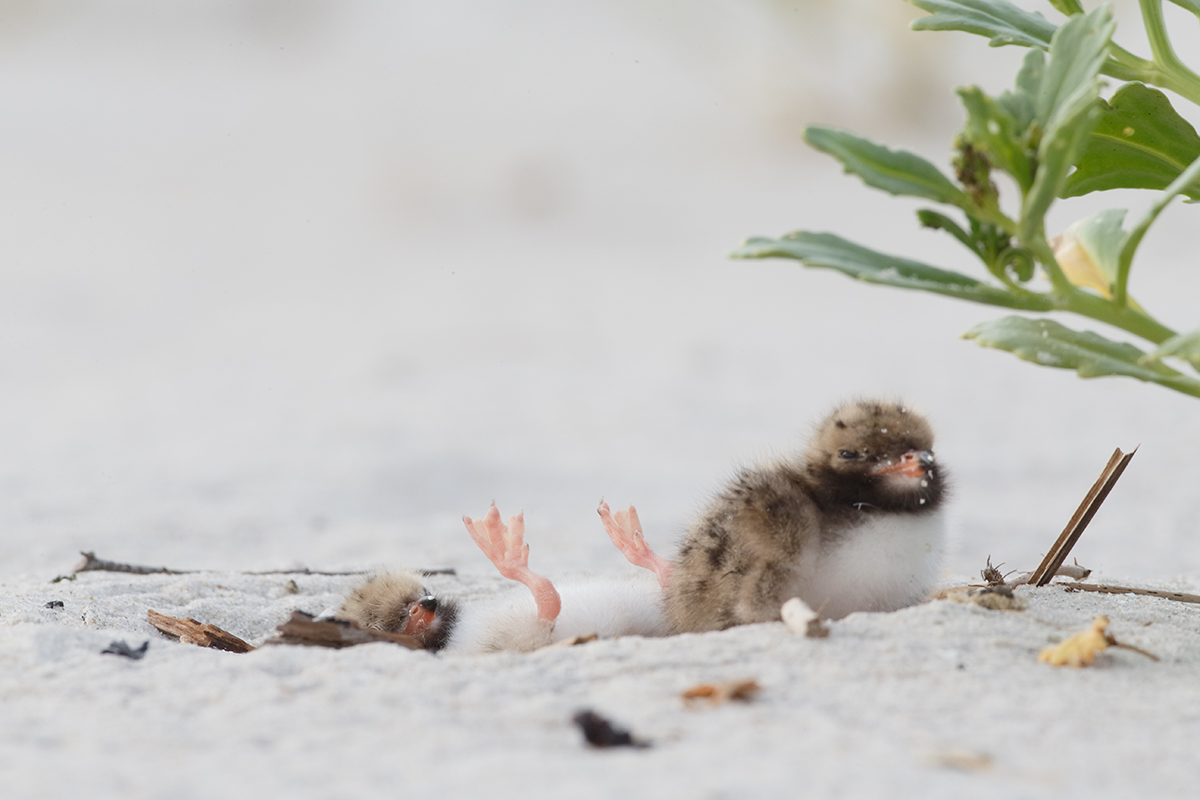
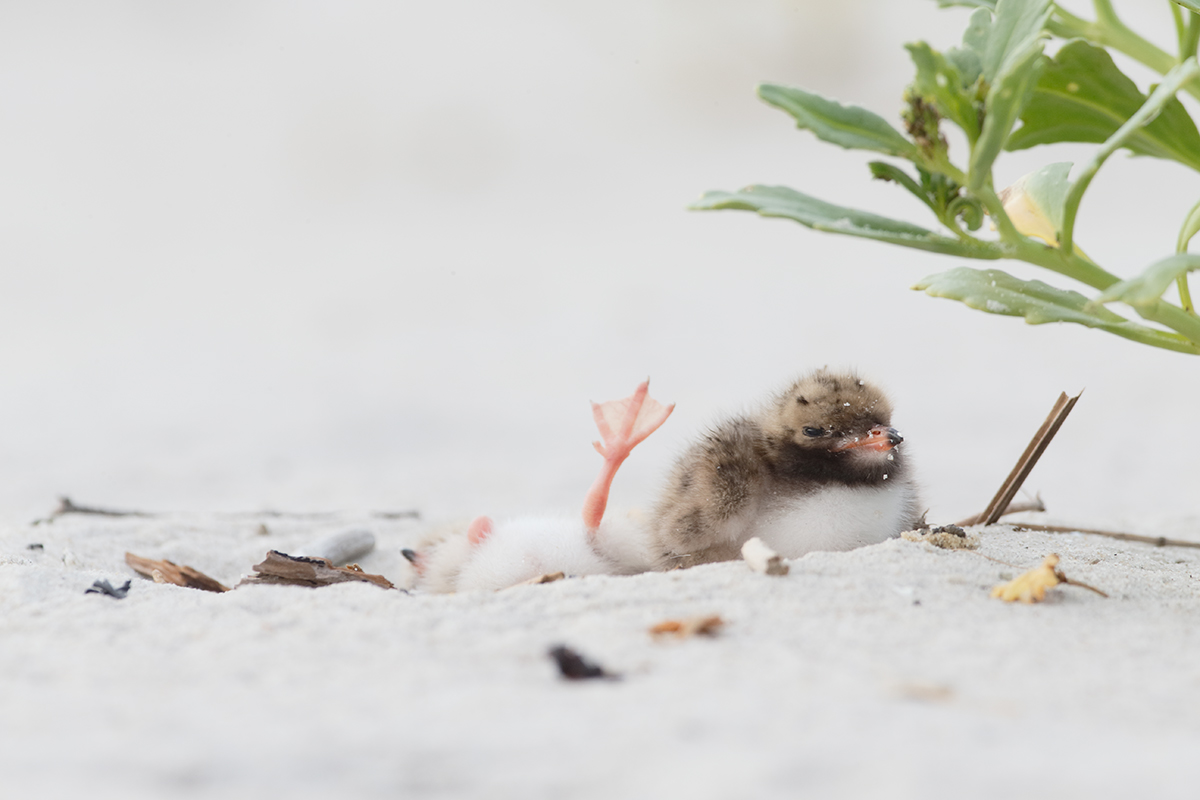
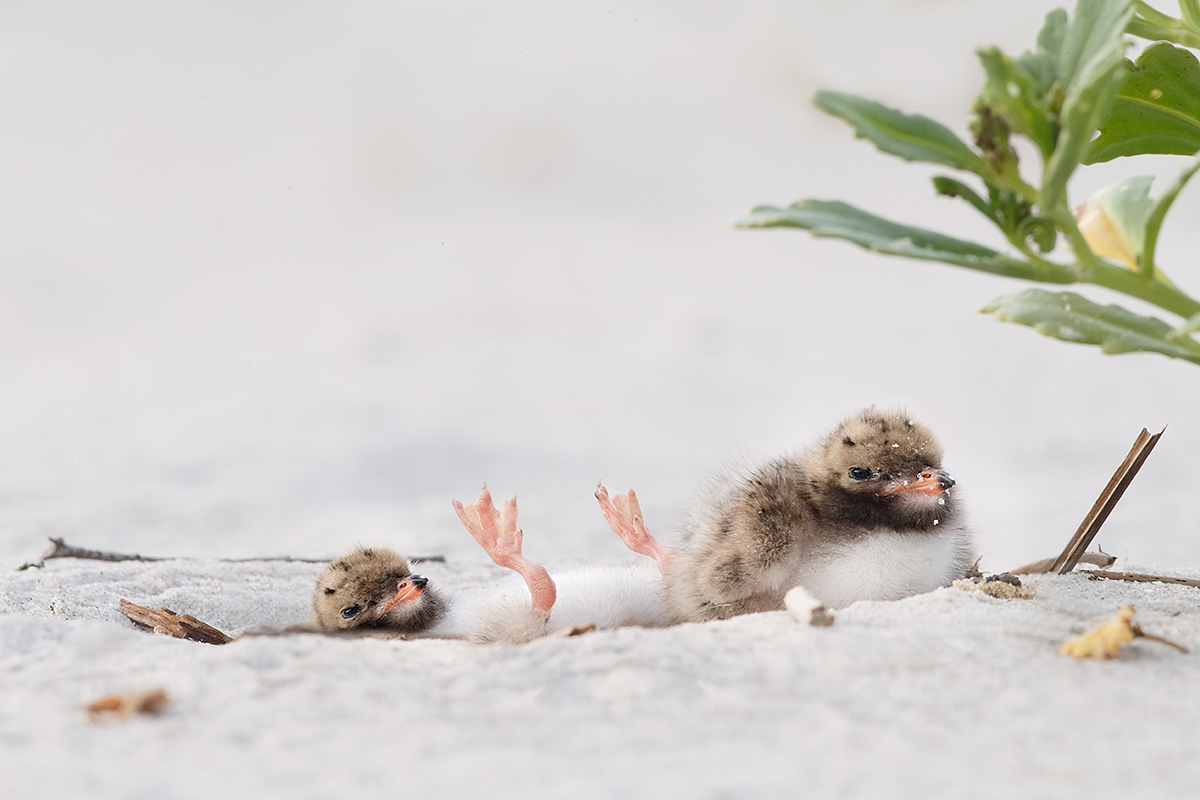
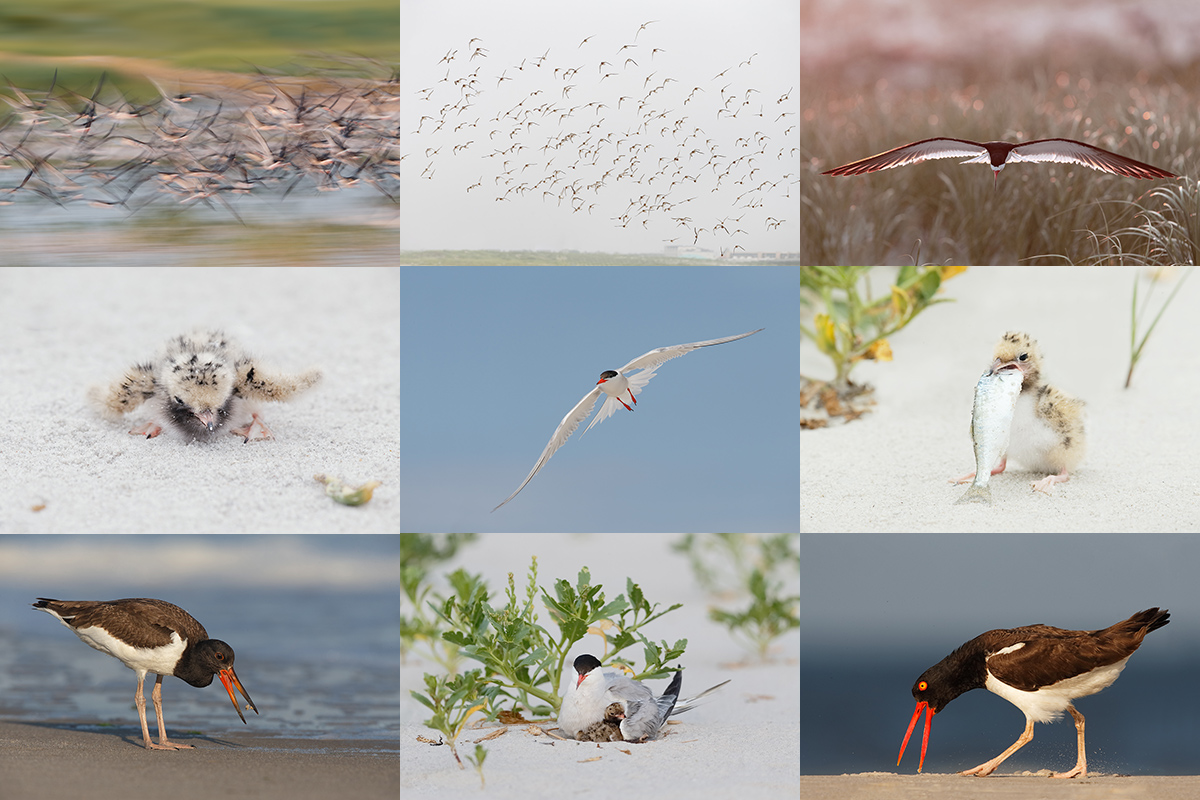
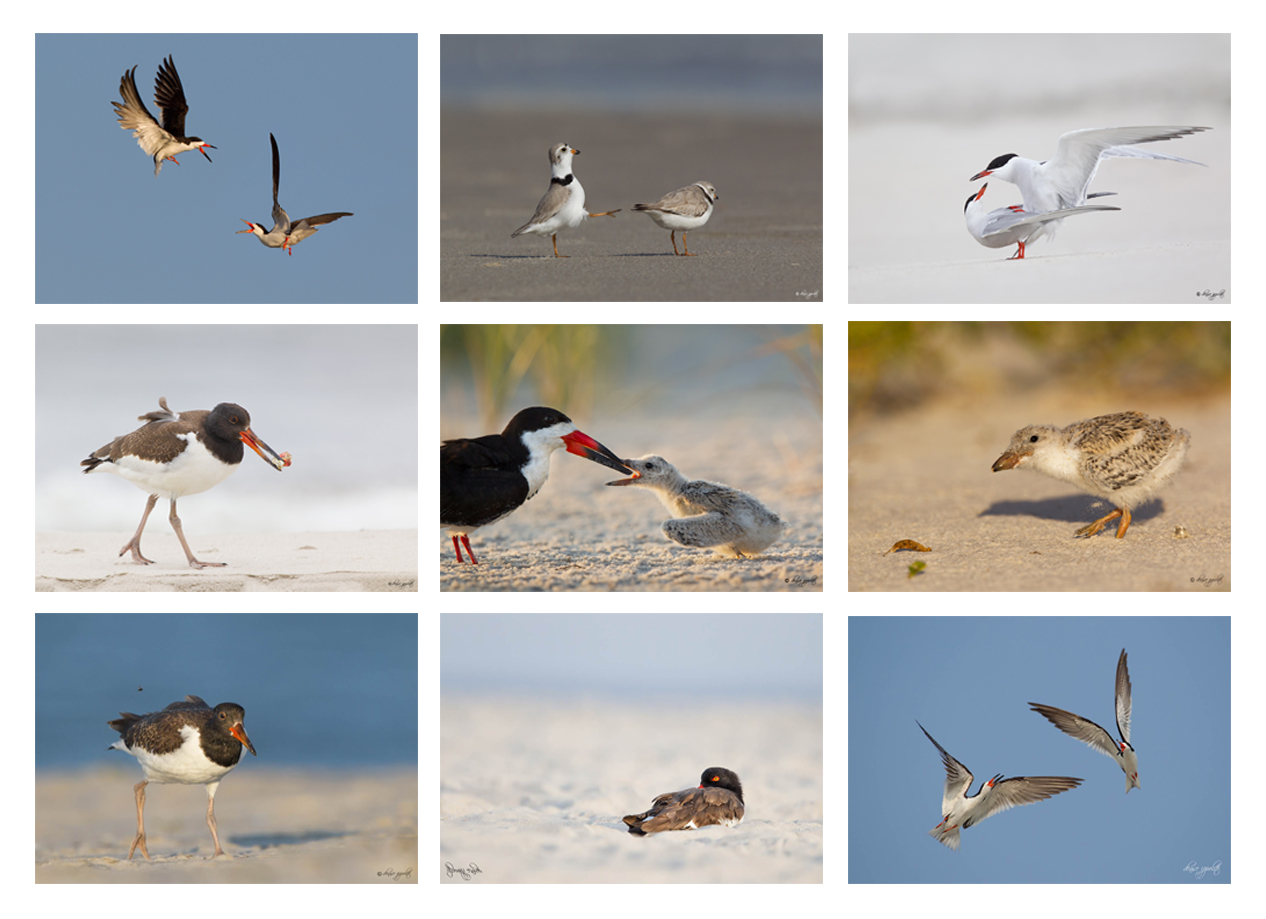















The composite photo is certainly nicely executed from an aesthetic point of view. My personal opinion is that this is going to far to be used in an editorial manner, even if labeled as a composite. I don’t think the “happy face” of the upside down chick is realistic. I think the first original photo captures the humor of the situation nicely.
One major editing is you copied the standing birds head to the bird that fell down. I think that makes a nice story. Other editing are regular ones – cleanup, sharpening etc.
You removed some of the debris on the beach in the foreground as well as the small piece of wood to the left of the upside down chick’s head.
I have done the same to some of my own images. In a series of shots there might be various nice elements captured on different moments in the same sequence. When neither of the original shots are satisfying, then I would use the elements I liked to create the shot I would have wanted. I don’t see a problem with this, because it is part of the artistic expression that we want to create. Off course these images should not be passed as originals when showcased.